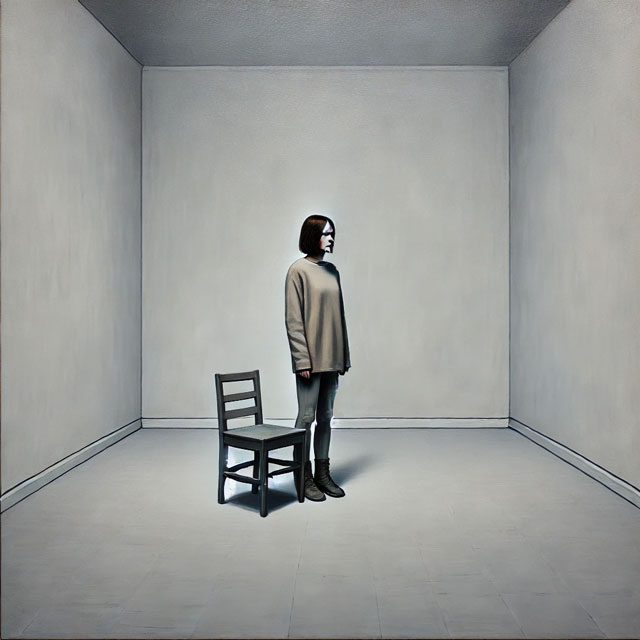
Minimalism has dominated graphic design for the past decade, making everything look sleek, simple, and functional. Whether it’s your favorite app, a popular website, or a brand’s logo, you’ve probably noticed how stripped down and clean everything looks. But is this obsession with minimalism killing creativity in graphic design?
Minimalism isn’t just a design trend. It’s an entire philosophy, shaping how we think about art, branding, and even our daily lives. At first glance, minimalism seems like the perfect solution for an increasingly cluttered world. But beneath its calm, ordered surface, this trend may be doing more harm than good for the graphic design world. Designers are playing it too safe, and creativity is paying the price. It’s time to push back against the reign of minimalism and bring bold, expressive designs back into the spotlight.
The Origins of Minimalism in Graphic Design
Minimalism in graphic design didn’t appear overnight. It has deep roots in the modernist movements of the early 20th century, particularly in the work of the Bauhaus school. The Bauhaus movement, born in Germany, focused on the idea that “form follows function.” In other words, design should prioritize practicality and simplicity over unnecessary decoration. The idea was revolutionary at the time, and it laid the foundation for what would later become minimalist design.
Minimalism gained further momentum with the Swiss design movement, also known as International Typographic Style. This approach emphasized clean lines, grid-based layouts, and simple sans-serif fonts. The focus was on clarity and neutrality, which became a guiding principle for designers seeking order and simplicity. Swiss design’s influence can still be seen today in the clean, grid-based layouts used by many graphic designers.
In the digital age, companies like Apple and Google took minimalism to new heights. Apple’s sleek products and uncluttered interfaces set the standard for modern minimalist design. Google followed suit, emphasizing simplicity in their branding and UI/UX design. Tech companies favored minimalism because it aligned with their goals: efficiency, speed, and usability. As these companies became design leaders, minimalism spread throughout the industry.
Why It Works
Minimalism’s appeal isn’t hard to understand. In a world where attention spans are short and distractions are everywhere, simplicity can be refreshing. Minimalist designs load faster on websites, make apps easier to navigate, and ensure that key information isn’t lost in a sea of visual noise. Designers like minimalism because it strips away distractions and focuses on functionality. It’s efficient, and it helps users get straight to the point.
Additionally, minimalism’s clean aesthetic allows for a sense of professionalism and elegance. It’s why corporate branding often favors this style. The sleek, uncluttered look signals trustworthiness, modernity, and sophistication. Minimalism, in many ways, solves practical problems in design, making it ideal for brands that want to communicate their message clearly and without confusion.
However, minimalism has become so dominant that it’s suffocating creativity. While its simplicity has its benefits, it’s leading to a world where everything looks the same.
The Dark Side of Minimalism: How It’s Stifling Creativity
Minimalism is starting to take over the design world, and it’s having a negative effect on creativity. As more designers adopt minimalist principles, we’re seeing less variety and experimentation. Instead of unique and interesting designs, everything is starting to look identical. The result is a landscape where creativity feels stifled.
In the past, graphic design was full of bold, diverse styles that helped brands stand out. Now, it’s common to see companies using the same flat icons, monochromatic palettes, and sans-serif fonts. This uniformity is especially noticeable in website design. Many businesses, especially startups, use almost identical layouts that follow minimalist principles. White space, simple navigation bars, and basic color schemes are everywhere. This uniform approach might be functional, but it’s not memorable.
The homogenization of graphic design is also visible in branding. Minimalism has led to the flattening of logos, which strips away the personality that once made brands unique. For example, many companies have updated their logos by simplifying them into flat, two-dimensional designs. While these logos might look modern, they lack the distinctive flair of older, more detailed designs. This is a clear sign of how minimalism is erasing creativity.
Designers are feeling the pressure to conform to minimalist trends. The clean, simple look has become so widespread that many designers feel they have no choice but to follow it. As a result, self-expression in design is being pushed aside. Rather than experimenting with new techniques or bold visuals, designers are sticking to what’s safe and accepted. This is leading to a loss of creative freedom and innovation in the industry.
The oversimplification of ideas is another consequence of minimalism’s dominance. By stripping designs down to their bare essentials, minimalist designers often fail to capture the complexity of the message they’re trying to convey. This is particularly noticeable in advertising and poster design. Minimalist posters, for example, may be visually striking, but they often lack depth. When every design is reduced to a few basic shapes or colors, the nuances of the message can be lost. This limits the ability of graphic designers to tell rich, layered stories.
Maximalism in Graphic Design: Why More Can Be More
Maximalism is the bold counterpoint to minimalism. Where minimalism emphasizes restraint, simplicity, and order, maximalism celebrates excess, complexity, and richness. In graphic design, maximalism allows designers to play with color, texture, and form in ways that minimalism discourages. It’s a style that embraces creativity rather than limits it.
Maximalism gives designers the freedom to break the rules and make statements that stand out. Instead of focusing on what can be removed from a design, maximalism focuses on what can be added. Bright colors, layered patterns, and elaborate typography are common features of maximalist design. This approach allows designers to create visuals that are attention-grabbing and memorable, perfect for industries that need to stand out in a competitive market.
Some of the most iconic graphic designers in history have embraced maximalism. For example, Paula Scher, a well-known American graphic designer, is famous for her bold, maximalist approach to typography and color. Scher’s designs reject minimalist simplicity in favor of energetic, vibrant compositions that demand attention. Her work proves that maximalism can be effective when done well.
Maximalism also allows designers to tell more complex visual stories. Instead of reducing a design to a few elements, maximalism encourages the layering of images, patterns, and text. Each element in a maximalist design serves a purpose, contributing to a rich, multifaceted composition. Maximalism allows for greater emotional and sensory engagement, creating designs that resonate more deeply with audiences.
Vibrancy and emotion are key elements of maximalist design. By using bold colors, intricate patterns, and dynamic layouts, maximalism can evoke strong feelings in viewers. For example, concert posters or album covers often use maximalist techniques to create excitement and energy around the event or music. These designs are visually striking, making them perfect for grabbing attention in a crowded market.
Maximalism in branding is making a comeback, especially in industries like fashion and entertainment. Companies are starting to realize that minimalist logos and layouts, while sleek, don’t always capture the essence of their brand. In contrast, maximalist designs allow for greater creativity and expression, giving brands a unique visual identity. Bold, dynamic branding stands out, especially on social media, where eye-catching designs are key to attracting attention.
The Consequences of Minimalism’s Dominance in Graphic Design
As minimalism continues to dominate graphic design, it’s leading to negative consequences for the industry. One of the biggest issues is the lack of experimentation, especially among younger designers. Graphic design programs in schools and universities often emphasize minimalist principles, teaching students to prioritize clean, simple designs over more daring, complex compositions.
This focus on minimalism can stifle creativity before it even begins. Students learn that minimalism is the “right” way to design, while maximalism and other bold styles are overlooked. As a result, many emerging designers feel limited in their creative expression. They are taught to prioritize functionality and efficiency, leaving little room for the kind of risk-taking that leads to innovation. When designers are afraid to take risks, the industry as a whole becomes less innovative.
Brands are also feeling the negative effects of minimalism’s dominance. Companies that adopt minimalist design principles may find themselves losing their unique identity. As mentioned earlier, many brands have simplified their logos to fit the minimalist trend, but in doing so, they lose the distinctiveness that once set them apart. A minimalist logo may look modern, but if it doesn’t capture the spirit of the brand, it’s not doing its job. This is especially problematic in competitive industries where branding is key to standing out.
Creativity suffers when everyone is following the same trend. In the world of graphic design, minimalism has become a default. As more designers and brands adopt this style, the industry becomes less diverse and interesting. Innovation slows down, and we’re left with a sea of designs that all look the same. The overreliance on minimalism is holding the graphic design industry back, preventing it from evolving and growing.
How to Push Back: Bringing Creativity and Individuality Back into Graphic Design
It’s time for graphic designers to push back against minimalism and bring creativity back into their work. The first step is to start designing with personality. Minimalism often leads to designs that are stripped of individuality. By reintroducing more personal elements into their designs, graphic designers can break free from the minimalist mold and create something unique.
Experimenting with hybrid styles is another way to push back. Minimalism and maximalism don’t have to be opposites. Designers can blend the best of both styles, creating designs that are simple and functional but still bold and expressive. For example, a designer might use a clean layout with bold, vibrant typography or a minimalist color palette with complex patterns. This hybrid approach allows for creativity without sacrificing usability.
Breaking free from rigid grids is another way to inject more creativity into graphic design. Minimalism often relies on strict, grid-based layouts that can feel restrictive. Designers should experiment with more organic, fluid layouts that allow for greater flexibility and expression. This might mean breaking symmetry, playing with negative space, or introducing unexpected elements into the design.
Finding inspiration outside the trend cycle is crucial for designers who want to escape minimalism’s grip. Designers can look to art, history, and non-digital mediums for fresh ideas and approaches. For example, vintage posters or album covers often use maximalist techniques that are full of color, texture, and energy. By looking beyond what’s popular right now, designers can create work that feels timeless and original.
The Future of Graphic Design: Balancing Minimalism and Maximalism
As graphic design evolves, the future may lie in a balance between minimalism and maximalism. Both styles have their strengths, and combining them could lead to more diverse and exciting designs. Minimalism’s focus on clarity and functionality doesn’t have to exclude maximalism’s boldness and complexity. A more balanced approach could give designers the freedom to experiment while maintaining the usability that minimalism offers.
Current trends suggest that maximalism is already starting to make a comeback. In industries like fashion, music, and entertainment, we’re seeing a shift toward more vibrant, dynamic designs. Brands are realizing that minimalist designs, while sleek, don’t always capture the energy and personality they want to convey. Maximalism, with its bold colors, intricate patterns, and layered compositions, offers an alternative that stands out in today’s saturated market.
The future of graphic design may depend on finding the middle ground between minimalism and maximalism. As designers explore the potential of both styles, the industry could see a resurgence of creativity and innovation. The key will be balancing the practical benefits of minimalism with the expressive freedom of maximalism.
Creativity Over Conformity
In the end, creativity should always come before conformity. While minimalism has its place, it shouldn’t dominate the world of graphic design. Designers should feel free to break away from trends and explore new possibilities. By embracing bold, expressive styles like maximalism, graphic designers can bring more creativity and individuality into their work.
As the famous graphic designer Milton Glaser once said, “There are three responses to a piece of design – yes, no, and wow! Wow is the one to aim for.” Minimalism often gets a “yes” for its clean lines and simplicity, but it’s maximalism that has the potential to inspire the “wow.” It’s time for graphic design to bring back the “wow” factor.




